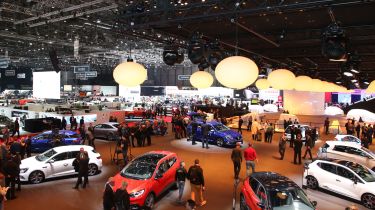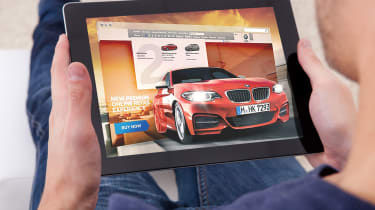The future of cars and car buying
We’ve seen big changes in the 10 years of Carbuyer but there’s much more to come...
The car buying landscape in the UK has seen lots of change over the 10 years that Carbuyer has been in existence. Some of the trends that have moulded the market into the shape we see today were easy to see coming but others would have been tough to predict, even with a fully functioning crystal ball.
There will undoubtedly be changes that swoop down out of the blue in the coming years as well but what are the trends that we can predict with some degree of confidence? We’ve put our heads together and come up with the following insights into the future of cars and car buying.
• Best new cars coming in 2021 and beyond
Buying online
You can already buy a car online today, so in one sense this future trend is already here, but in the years ahead it’s only going to become more normal and popular to buy cars digitally; maybe without even taking a test drive or ever seeing the car in real life.
The new approach sees dealerships reinvented as customer service and information hubs where motorists can research the car they’re going to buy and maintain the one they’ve already got. More and more new car sales will shift online to manufacturer websites that are designed mainly to make choosing, specifying and buying a car as simple and quick as possible.
If any of this sounds familiar it’s because Tesla is already doing it and other brands, like Mazda and Hyundai, are making moves in the same direction. Online car sales worldwide are expected to top one million units in 2020 and six million units in 2025, according to analysts Frost and Sullivan. In the UK, they’ve doubled every year since 2014 and the pace of growth is accelerating.
If the idea of making a purchase as significant as a new car exclusively online seems daunting, you probably think buying a used car without ever seeing it in the metal is even more strange. In reality though, online sales of used models are accelerating too. Carbuyer’s sister site Buyacar has thrived in recent years thanks to its accessible digital solution for customers to find and finance used cars then have them delivered to their doors.
Buyacar’s slightly younger buyer profile suggests that buyers who’ve grown-up in the online world see no problem with ordering a new car and not seeing it until it’s delivered. In fact, they view the speed and convenience of not having to visit dealers as a real positive.
Connectivity
The internet is coming to our cars. The latest new models already have advanced options for pairing smartphones through Apple CarPlay, Android Auto and other software integrations, while wifi-based services allow remote control of our vehicles via apps and over-the-air software updates. There is much more to come, though, as the connected car opens up new possibilities for added convenience, and safety, as well as surveillance.
Fast 5G internet connections will enable new cars to share data with each other and receive information about their surroundings from sensors around the road network. Your car will ‘know’ about accidents or traffic problems ahead so it can slow down or re-route accordingly. Traffic lights will be able to respond to traffic volumes in real time, altering their sequencing to improve the flow. The possibilities are endless.
Pay per mile
From what we can tell today, electric cars are going to be the future of motoring but that means a huge shift in the way we use our vehicles. The electric charging infrastructure issue is a big and hotly debated one but the UK network is growing quickly to keep pace with demand. A potentially bigger change that’s creeping in under the radar is how cars are taxed.
When the sale of new internal combustion engined cars is banned in 2030, sales of petrol and diesel cars will already have been on the wane for some time and so will sale of the fuels to put in them. The Treasury currently makes around £28bn a year from fuel duties, which represents 1.3% of the total national income. Revenue peaked in 1999 at 2.2% of total UK income and has been declining ever since, but it will soon disappear altogether and a replacement source of cash will be needed before it does.
One likely solution is pay-as-you-drive. We already have black box car insurance that adjusts your premiums based on the mileage you cover and how you drive but the arrival of 5G connectivity along with the roll-out of Automatic Number Plate Recognition (ANPR) cameras will make more detailed tracking of drivers possible. Some kind of road charging to replace the lost fuel duty, whether it’s based on annual mileage recorded at the annual MoT or on motorway journeys undertaken, seems likely.

Battery technology
As motorists, we’ve become used to driving long distances with only occasional short stops to fill up with fuel. In the short term, the electric car will demand some tempering of our expectations, as the longest range models currently available only manage just over 300 miles before they need a recharge. The big batteries that can achieve this are also expensive to produce with a significant amount of pollution generated in the production process.
For these reasons battery technology is going to be a major focus for car manufacturers in the coming years. Smaller, lighter batteries that can hold more power and recharge more quickly can further unlock the potential of electric cars. Much is being made of the potential of solid state battery technology but it’s still thought to be five years or more away from production cars. In the shorter term, refinements to lithium-ion batteries are also likely to bring improvements in EV range and cost. Watch this space!
Self-driving cars
The idea of the autonomous car has been a staple of science fiction for decades but it’s coming closer than ever to production reality. Just how close we are to buying a car that drives us to work while we catch-up on some emails or eat breakfast in the back seat is a bone of considerable contention.
If you listen to Tesla, probably the biggest cheerleaders for autonomous car technology of all today’s car manufacturers and purveyors of the controversial Autopilot driver assistance technology on its new models, the day when you never have to drive again is within touching distance. The consensus across the car world, however, is that true self-driving cars still face some sizable technical barriers.
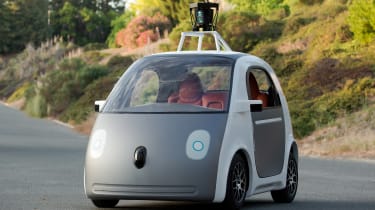
More and more automated driver assistance systems are being built into modern cars that you can buy now. Automatic emergency braking, lane-keeping assist and radar cruise control all lay the foundations for self-driving in cars but the leap from here to the car that will take you home from the pub after a few drinks or off on holiday while you get some sleep is deceptively huge. Right now, technology from Tesla and other manufacturers can pilot a car with zero input from the driver most of the time but the driver needs to be ready to take control if and when something goes wrong.
Tech is improving but before they can be sold to the public as self-driving cars, vehicles must be able to drive themselves, coping with all potential scenarios that may occur on public roads packed with traffic, pedestrians, cyclists and rogue wildlife, in all weather conditions, with 100% accuracy. If the driver needs to monitor their every move, many will feel that they might as well be driving and the true benefits of autonomy only really materialise when the driver is free to do something else.
The message from most of the industry is not to expect to be able to buy a self-driving car anytime soon, but you can benefit from the significant safety improvements that driver assistance systems bring today. The Euro NCAP crash tests now rate this technology to help buyers understand which work best and, crucially, which are correctly marketed to consumers by manufacturers.
- 10 years of Carbuyer
- Car buying in the digital world
- What’s changed in the UK car market?
- What kind of cars do UK buyers like best?
- MPG, emissions and going electric: what does it all mean for car buyers?
- How far has car safety come in a decade?
- Car finance and the PCP. How car buying went into credit
- The future of cars and car buying
Most Popular
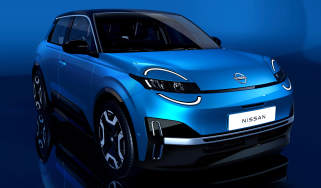
New Nissan Micra is a Renault 5 in Nissan clothing
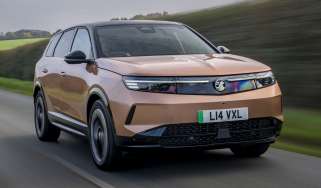
Vauxhall cuts EV prices to avoid revised luxury car tax
Tips & advice

Car dashboard warning lights: what does each symbol mean?

Electric car charging stations: public networks, charger types, apps and maps


